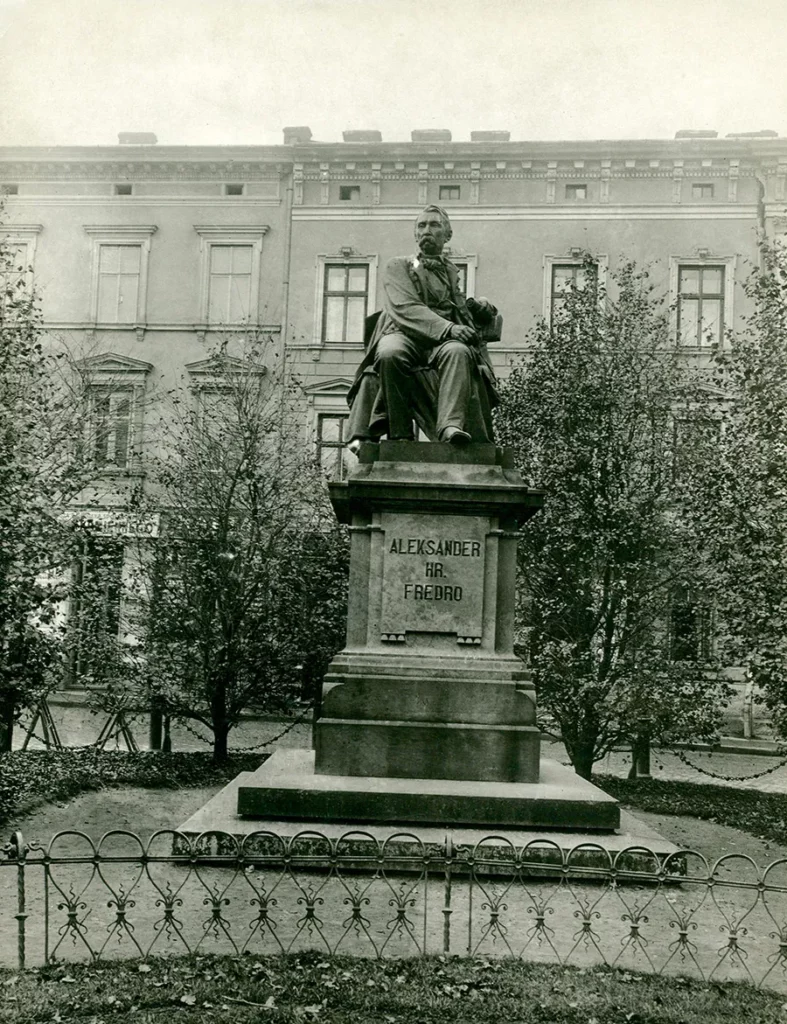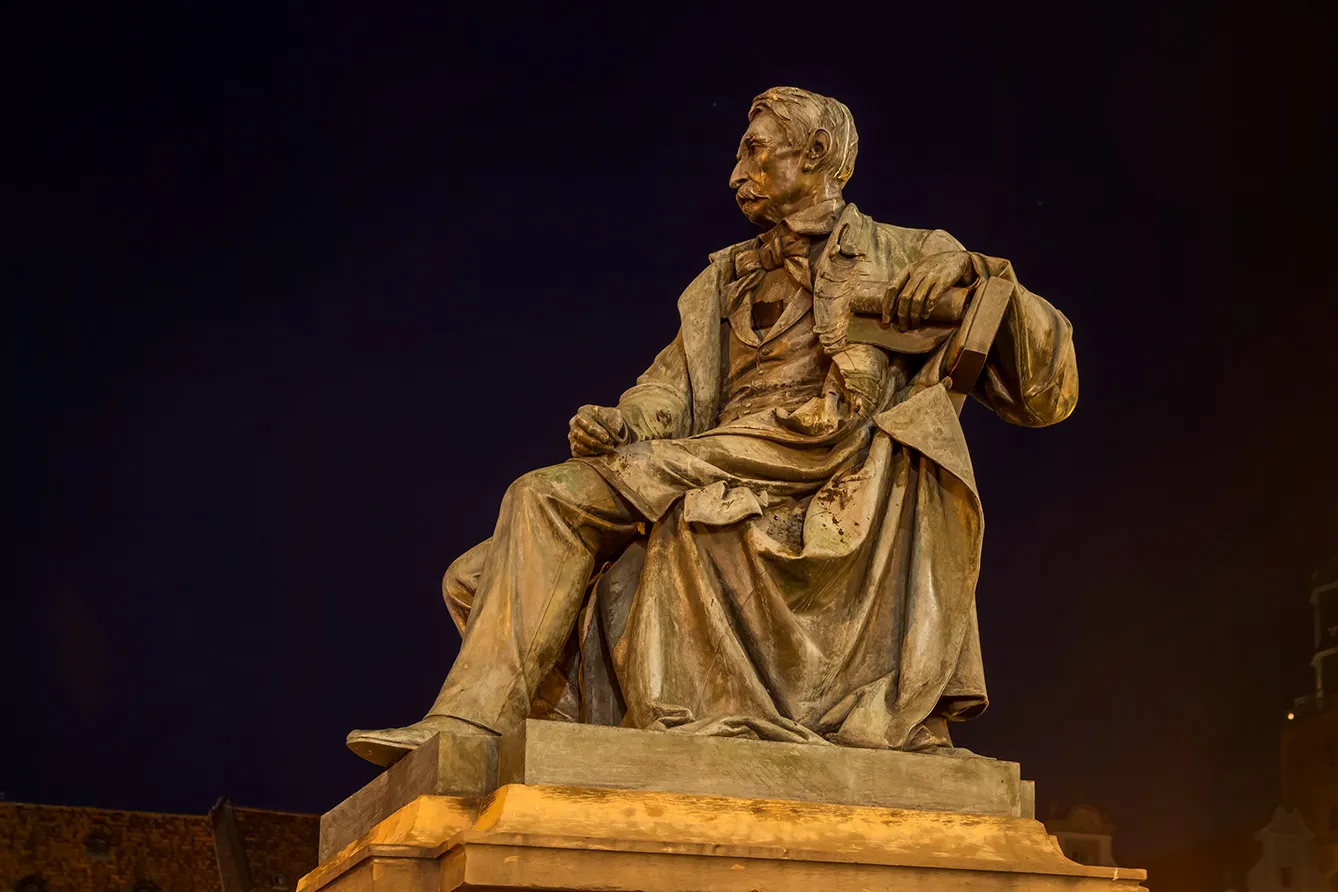In the large Town Square of Wrocław, one of the most populous cities in Poland, an old bronze man sits on a chair, his elbow supported by the back of the chair, his huge mustache drawing all the attention. That would be Aleksander Fredro, a 19th-century playwright and one of the most notable figures in Polish literature. But although the statue brought its own chair, the pedestal it sits on was not initially intended for Fredro. In fact, its presence is a symbol of the troubled history of Wrocław.
The moving borders
Vratislava (Latin) and Breslau (German) have perhaps been more used throughout history to describe the town of Wrocław, which lies on the lagoon of islands created by the Odra riverbed. And though both German and Polish names clearly resemble the Latin ones, for most of its history, Wrocław was a city dominated by German culture.
The balance of nationalities changed after World War II when borders between countries shifted. Along with the border changes, there came migration, often forced by the new authorities. The Germans were forced out of Germany, which created a vacuum. But, at the same time, the Poles were forced out of the city of Lwów (the modern-day Ukrainian town of Lviv). In the region, people were, therefore, literally moving out and moving in. And people bring along their possessions when they move, right?
The Lviv years
Such was the fate of the Fredro monument, which was originally erected almost 600 kilometers to the east in Lwów. Part of the multi-national Polish-Lithuanian Commonwealth, a large political entity that in the 18th century was taken over by Russia, Prussia, and Austria, Lwów was perhaps its most important city in the east.
When, after World War One, Poland was to be recreated as a modern nation-country, an international agenda known as the Curzon Commission established that the Ukrainian people dominated the territories around the city. Still, Lviv was Lwów, the city with a Polish majority, and its area became part of the so-called Second Republic of Poland, which existed until 1939. The Fredro monument was, at the time, well-established on the prominent street that now bears the name of Ukrainian romantic poet Taras Shevchenko.


But the end of World War II brought political turmoil to the region. It was decided that the ethnic line established by Curzon Commission would now delineate countries: the Ukrainian Soviet Socialist Republic, part of the USSR, and the People’s Republic of Poland. To compensate for the loss, Poland was given the territories to the west at the expense of the defeated warmonger Germany. Many of those regions were somehow tied to Polish history (though sometimes very ancient), and hence in Poland, they were called the Recovered Territories.
The Wrocław ethnic mix
This time, along with new borders, the ethnic composition of the lands was to be “adjusted.” Willy-nilly, the people were moved hundreds of kilometers, usually by train, and allowed to bring along just the essentials. Poles from the east came to the emptied ex-German lands, and found furnished houses, complete with the previous tenants’ souvenirs in the attics. During their exodus, they were sometimes forced to change their lifestyles; farmers turned into city dwellers and vice versa. To survive the shock, they held on to their culture.
The settlement between the Polish and Soviet Ukrainian governments facilitated that bond. In the case of the Fredro monument, as well as many different monuments and institutions, the decision was to move out of Lwów to Poland all the all-Polish souvenirs, those connected with no other culture apart from Polish. The exception was the monument of romantic poet Adam Mickiewicz, which was popular in the city and stands there to this day.
But Fredro moved out and started his new life in the new Poland. He spent over a decade in Warsaw, standing in a park. Meanwhile, Wrocław was so dominated by Eastern Polish culture it became an object for jokes. But also it was an important city – say, the Ossoliński National Library, one of the most notable institutions of Polish culture, moved there from Lviv.
It was decided, then, that the playwright’s place would be in Wrocław as well. Almost six decades after the inauguration of the monument in Lwów, it was unveiled again, half a thousand kilometers to the West, in the now-Polish city’s main square. Fredro’s monument shared the fate of his compatriots – moving into the space previously occupied by the Germans but now empty. His place is the former place of the Prussian King Friedrich Wilhelm III that, in 1945, was destroyed and disappeared in unknown circumstances.
Fredro’s monument to this day is a symbol of contradicting values: the brutal shift or clash of heritages in a city’s physical space and the housewarming attempts by the new citizens.







